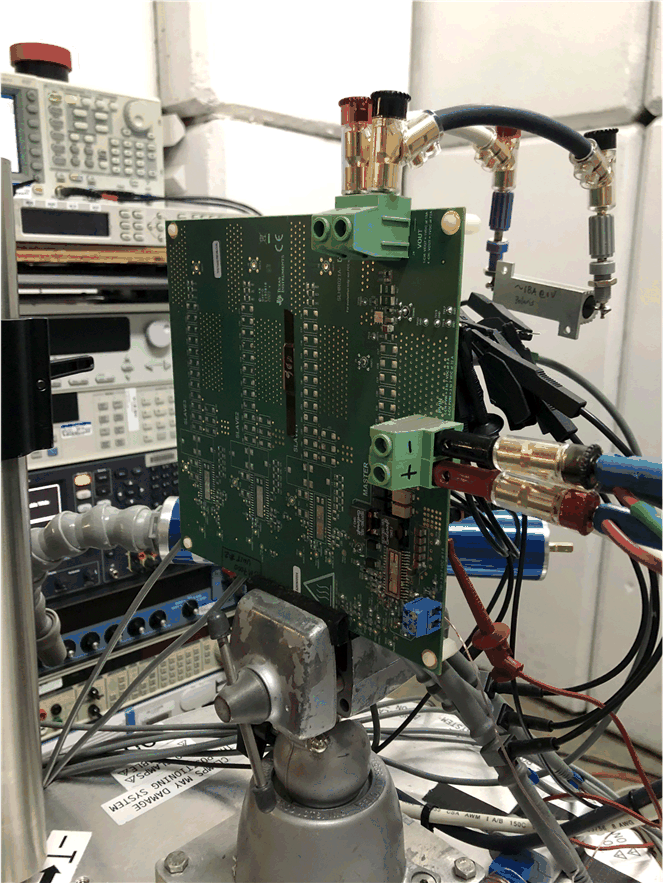SLVAEF4C august 2019 – may 2023 TPS7H4001-SP
PRODUCTION DATA
- 1
- Single-Event Effects Test Report of the TPS7H4001-SP
- Trademarks
- 1 Introduction
- 2 Single-Events Effects (SEE)
- 3 Test Device and Evaluation Board Information
- 4 Irradiation Facility and Setup
- 5 Depth, Range, and LETEFF Calculation
- 6 Test Setup and Procedures
- 7 Destructive Single-Event Effects (DSEE)
- 8 Single-Event Transients (SET)
- 9 Summary
- 10Total Ionizing Dose (TID) From SEE Experiments
- 11References
- 12Revision History
4 Irradiation Facility and Setup
The heavy-ion species used for the SEE studies on this product were provided and delivered by the TAMU Cyclotron Radiation Effects Facility [6], using a superconducting cyclotron and advanced electron cyclotron resonance (ECR) ion source. At the fluxes used, ion beams had good flux stability and high irradiation uniformity over a 1-in diameter circular cross sectional area for the in-air station (TAMU). Uniformity is achieved by means of magnetic defocusing. The flux of the beam is regulated over a broad range spanning several orders of magnitude. For the bulk of these studies, ion flux of ≈ 105 ions/s·cm2 were used to provide heavy-ion fluences of ≥107 ions/cm2. For these experiments Silver (109Ag) at angles of incidence of 0° and 25° were used for an LETEFF of 49.3 and 54.8 MeV·cm2/mg, respectively. Praseodymium (141Pr) at angles of incidence of 0° and 27.3° were used for an LETEFF of 66.37 and 74.95 MeV·cm2/mg, respectively. Holmium (165Ho), at angles of incidence of 0° were used for LETEFF of 75.82 MeV·cm2/mg. The 109Ag, 141Pr, and 165Ho ions used had a total kinetic energy of 1.634, 2.114, and 2.474 GeV, in the vacuum (using the 15 MeV/amu), respectively.
The TPS7H4001-SP test board used for the experiments at the TAMU facility is shown in Figure 4-1. Although not visible in this photo, the beam port has a 1-mil Aramica (DuPont® Kevlar®) 1-in diameter window to allow in-air testing while maintaining the vacuum within the accelerator with only minor ion energy loss. The air space between the device and the ion beam port window was maintained at 40 mm for all 109Ag and 141Pr runs. For all the 165Ho the distance was set to 30 mm.
 Figure 4-1 Photograph of the TPS7H4001-SP
Evaluation Board Mounted in Front of the Heavy-Ion Beam Exit Port at the Texas A&M
Cyclotron
Figure 4-1 Photograph of the TPS7H4001-SP
Evaluation Board Mounted in Front of the Heavy-Ion Beam Exit Port at the Texas A&M
Cyclotron